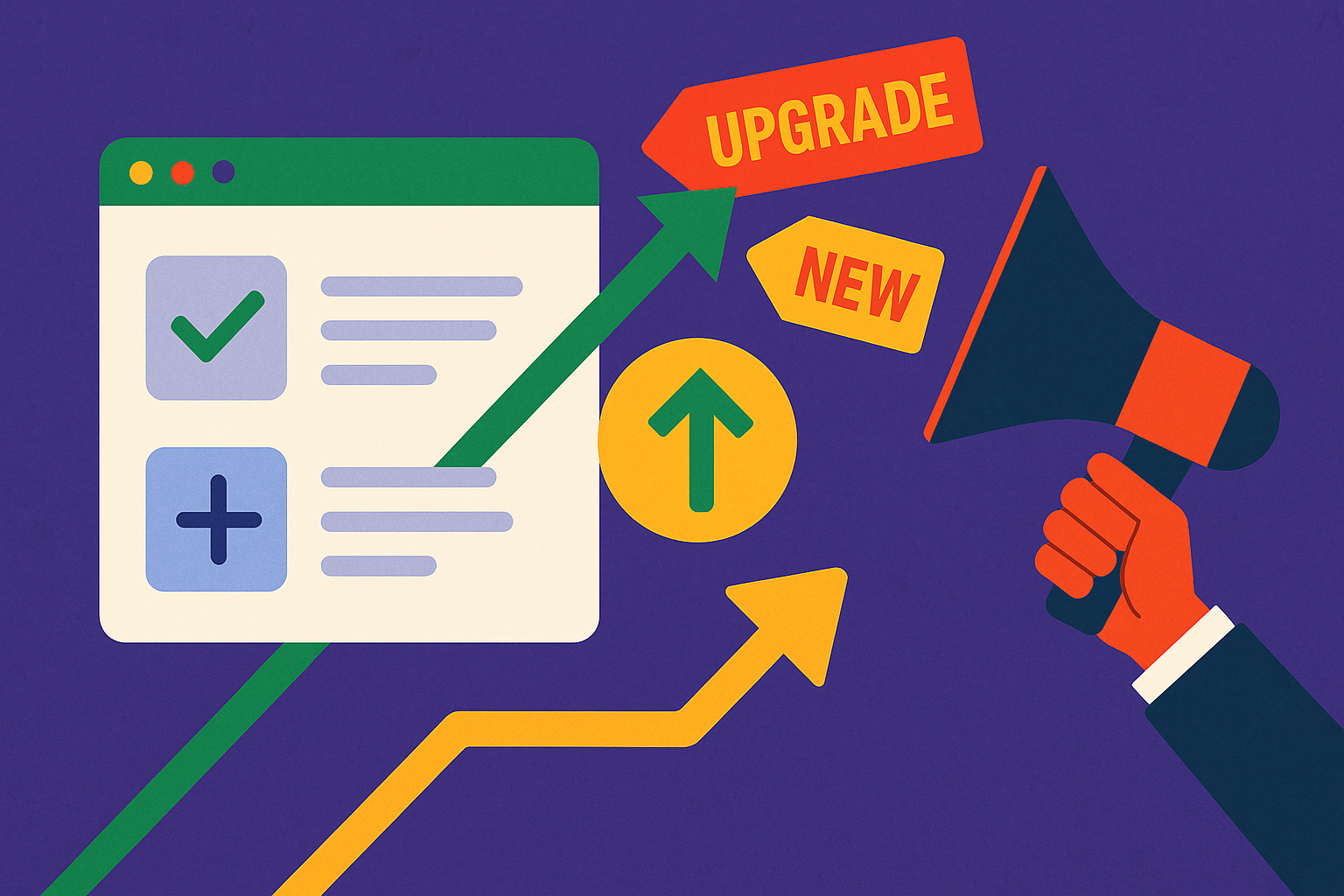Key Takeaways
- Bad changelog management costs SaaS companies 40+ hours per month and leads to higher support tickets, lower feature adoption, and missed engagement opportunities.
- Companies like Stripe and Linear succeed by focusing on clarity, consistency, and automation in their changelog strategies.
- Tools like SimpleDirect can save time, reduce frustration, and improve user engagement.
How Bad Changelogs Are Hurting Your SaaS Business
Think changelogs are just a minor detail? Think again. For SaaS companies, poor changelog management costs an average of 40+ hours per month, frustrates users, increases support tickets, and lowers feature adoption.
In our analysis of 100 SaaS companies, we uncovered the hidden costs of ineffective changelog strategies—and what separates the top performers from the rest.
By the end of this article, you’ll learn:
- The five hidden costs of bad changelog management.
- What the best SaaS companies (like Stripe and Linear) do differently.
- A step-by-step framework to save time, reduce confusion, and boost user engagement.

The Five Hidden Costs of Poor Changelog Management
- Time Wasted on Manual Updates
Manually drafting and distributing changelogs is a time sink. From writing, editing, and formatting for different platforms (email, in-app, blog), teams spend:
- 10+ hours per release when done manually.
- 40+ hours per month for frequent updates.
This time could be better spent building and improving your product.
- Increased Support Tickets
When updates are unclear or poorly explained, users flood support teams with repetitive questions.
- Companies with bad changelogs see a 25% spike in support tickets post-launch.
- These common questions arise:
- “What happened to [feature]?”
- “How do I use this new update?”
- “Why was this feature changed?”
This overwhelms your support team and delays responses, frustrating users even further.
- Low Feature Adoption Rates
Even the best features fail if users don’t know how (or why) to use them. Poorly written changelogs lead to:
- 60% of users ignoring updates due to vague or overly technical language.
- Low adoption rates, as users stick to old workflows instead of engaging with new features.
- Missed Engagement Opportunities
Changelogs are more than announcements—they’re a chance to re-engage users and showcase your product’s value.
- Companies with strong changelog strategies see:
- 15-20% higher click-through rates on feature announcements.
- Higher retention as users feel informed and empowered.
Poor changelogs miss this opportunity to build loyalty and excitement.
- Brand Damage
Users expect transparency and clarity from their SaaS tools. Inconsistent or confusing changelogs make your company seem:
- Disorganized.
- Out of touch with user needs.
- Unreliable when rolling out updates.
As one user put it: “I want to feel like I’m part of the journey—not like the product is changing behind my back.”

What the Data Says: Insights from 100 SaaS Companies
We analyzed 100 SaaS companies to understand the impact of changelog management. Here’s what we found:
| Metric | Poor Changelog Strategy | Optimized Changelog Strategy |
|---|---|---|
| Time Spent per Release | 10+ hours | < 3 hours |
| Support Ticket Volume (Post-Launch) | +25% | -15% |
| Feature Adoption Rate | 40% | 70%+ |
| User Engagement with Changelogs | Low (40% ignored) | High (60%+ engaged) |
Key Takeaways:
- 82% of companies spend more than 10 hours per release on changelogs when done manually.
- Companies with an optimized changelog strategy save time, reduce tickets, and see higher user engagement.
What Successful SaaS Companies Do Differently
The top-performing companies in our analysis—like Stripe, Linear, and Figma—share these five changelog strategies:
- Centralize Changelog Creation
High-performing teams use tools like SimpleDirect to centralize changelog management, ensuring consistency across all platforms (email, in-app, blog, etc.).
- Focus on User Value
Rather than listing technical changes, they highlight how updates benefit users.
- Bad Example: “Updated API to v3.0.”
- Good Example: “You can now process data 20% faster with our API v3.0 update.”
- Make Updates Visual
Visual changelogs (screenshots, GIFs, or videos) drive higher engagement. Users are more likely to explore new features when they can see how they work.
- Automate Distribution
Successful companies automate changelog delivery to the right channels:
- In-app notifications for active users.
- Email updates for less frequent users.
- Blog posts for detailed explanations.
Automation ensures timely, consistent communication.
- Track Engagement Metrics
Top companies measure the success of their changelogs using metrics like:
- Open rates (email or in-app notifications).
- Click-through rates to tutorials or resources.
- Feature usage post-update.
This data helps them refine their communication strategy over time.

How SimpleDirect Can Help
SimpleDirect simplifies changelog management so your team can focus on building, not explaining.
Here’s how we solve the five hidden costs of bad changelogs:
- Save Time: Automates changelog creation and distribution, saving 75% of the time spent manually.
- Reduce Support Tickets: Clear and concise updates prevent repetitive user questions.
- Boost Feature Adoption: Visual notifications and targeted updates drive higher engagement.
- Maximize Engagement: Analytics show how users interact with your updates, so you can improve over time.
- Strengthen Brand Loyalty: Consistent, user-friendly updates build trust and improve transparency.
How to Get Started
Want to improve your changelog process today? Follow these steps:
- Audit Your Current Process
Ask yourself:
- How much time does your team spend on changelogs?
- Are your users engaging with updates?
- Do you see a spike in support tickets after releases?
- Try SimpleDirect for Free
Start a free trial to see how SimpleDirect can streamline your changelog management.
- Use Our Changelog Playbook
Download our Changelog Playbook for actionable tips, templates, and examples to create updates your users will love.
Don’t let bad changelog management slow your growth. Start making updates that save time, engage users, and build loyalty today.






